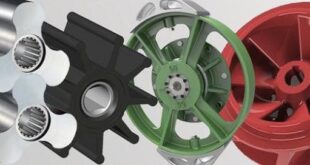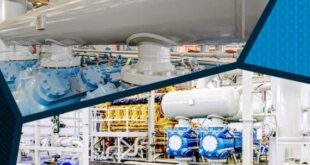Common pump industry terms and pump parameters
Common pump industry terms and pump parameters you should know:
Knowing the important terms of the pump industry will save your time when buying and choosing a pump. Here are some common terms that will likely come up during your conversations with pump suppliers.
Head:
A pressure measurement, expressed in meters or feet for centrifugal pumps. The unit of meter of water is used as the default, where 10 meters (33.9 ft) of water equals one bar (14.7 psi or 1 bar).
Flow:
Measuring the liquid volume capacity of a pump based on gallons per hour (GPH), gallons per minute (GPM), liters per minute (L/m) or milliliters per minute (ml/m) or larger units of cubic meters per hour (m3/h)
Pump performance curve:
The diagram provided by the pump manufacturer is to explain the relationship between the head and the flow rate of the pump using impellers of different sizes. The curve also includes efficiency, required NPSH, and power consumption in horsepower or kW as a function of flow.
Total Head / Total Dynamic Head:
The amount of head produced by the pump is calculated by adding static head, friction head, pressure head and velocity head.
Pressure:
The force exerted on the walls of a pipe by a liquid. Typically measured in pounds per square inch (PSI).
Pressure drop:
Refers to the amount of pressure loss between two points in a pipeline system. In general, it occurs due to the friction loss of the pipe due to the height difference between the two points.
Pipe friction loss:
Reduction of positive head due to frictional resistance between pipe walls and moving liquid.
Friction head:
Required pressure in pounds per square inch (psi) or feet of fluid required to overcome frictional resistance to flow in pipes and fittings.
Efficiency:
The ratio of total energy production to total electricity input, expressed as a percentage.
The best efficiency point:
BEP is the point at which the force coming out of the pump is closest to the force coming into the pump. In other words, the best efficiency point is the point where head (pressure) and flow converge to achieve the highest output for the lowest amount of energy.
Available net positive suction head (NPSHa):
NPSHa is available or available to prevent cavitation. To calculate NPSHa, one must consider [static suction head] plus [tank suction surface pressure] minus [fluid vapor pressure] minus [friction losses in suction pipes, valves, and fittings].
Required net positive suction head (NPSHr):
NPSHr is for pump obstruction from cavitation. NPSHr is generally supplied to you by the pump manufacturer.
Cavitation:
A process in which cavities or bubbles form in the low pressure area of the fluid and collapse in the high pressure area of the pump. They cause noise, pump damage and loss of efficiency because they distort the flow pattern. Occurs in centrifugal pumps when NPSHa < NPSHr.
Specific gravity (liquid):
It is the weight ratio of a given volume of liquid to pure water. Pumping heavy liquids (specific gravity greater than 1.0) requires more power and horsepower.
Viscosity:
It is the measurement of the resistance of liquids against the flow. In fact, how thick the liquid is. Viscosity determines the type of pump to be used, the speed at which the pump can operate, and with gear pumps, the internal clearance required.
Brake Horsepower
BHP is the actual amount of horsepower drawn by the pump and is measured on a brake caliper or dynamometer.
Flooded Suction:
In a flood suction system, liquid enters the pump inlet using gravity from an elevated source. This is generally recommended for centrifugal pumps.
Suction head:
A condition that occurs when the liquid source is above the pump line.
Suction lift:
A condition that occurs when the liquid source is below the pump line.
Specific speed:
A formula that describes the shape of the pump impeller. The higher the specific speed, the less N.P.S.H is required.
Pump impeller:
The moving element in a centrifugal pump is what drives the liquid.
 Ontrose industrial corporation Inc. Engineering and supply of industrial projects
Ontrose industrial corporation Inc. Engineering and supply of industrial projects



